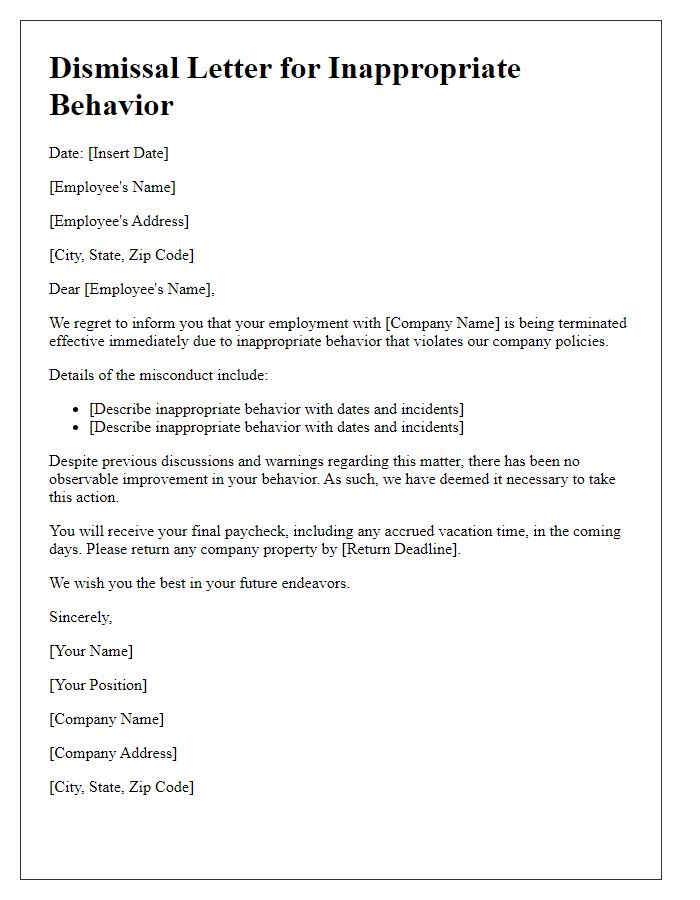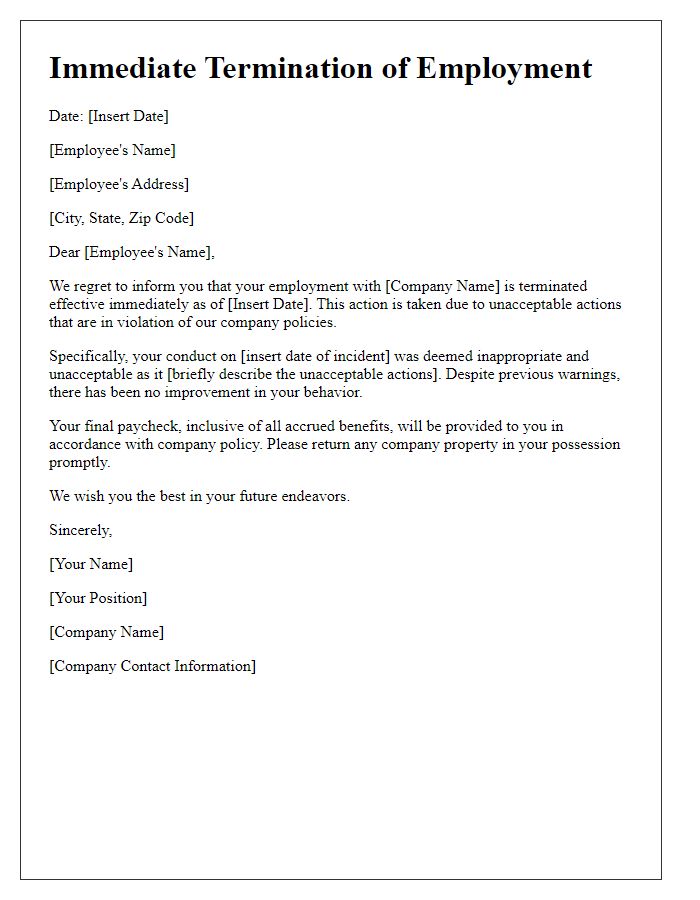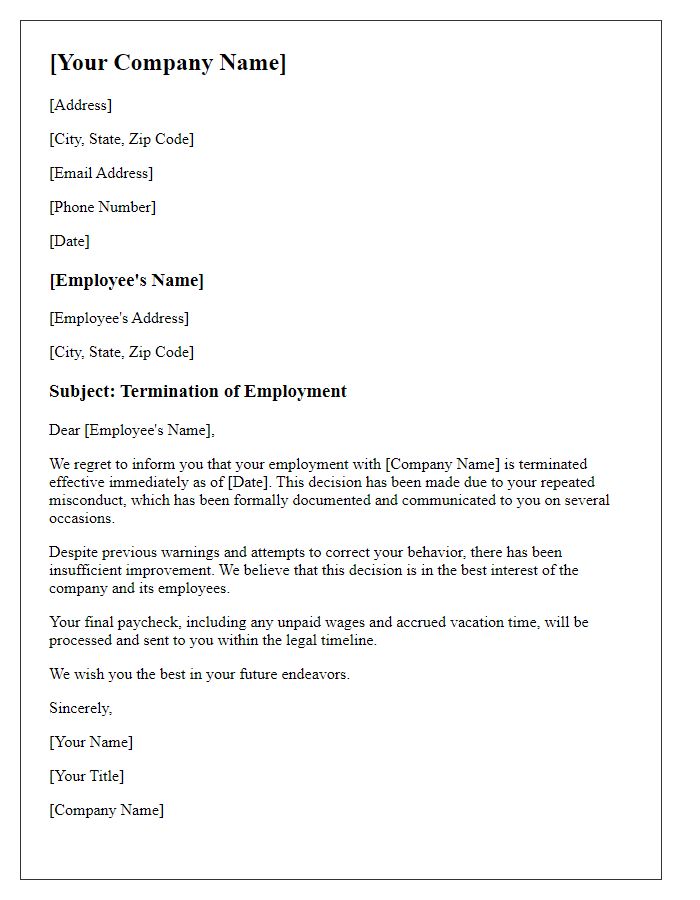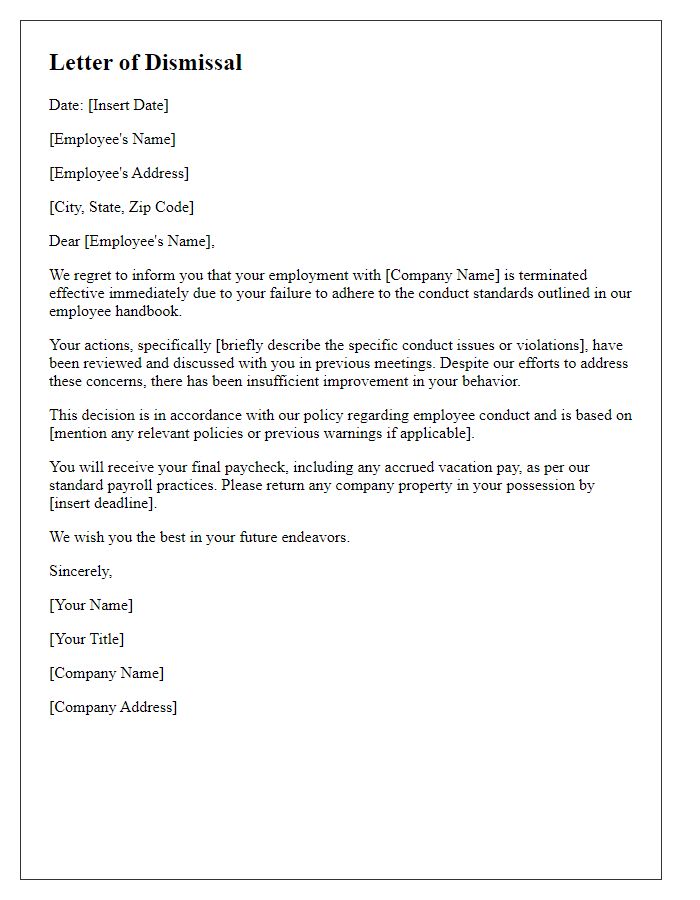When it comes to addressing unacceptable behavior in the workplace, communicating the decision to terminate an employee can feel daunting. It's important to approach the situation with clarity and compassion, ensuring that the message is both professional and firm. A well-crafted termination letter not only outlines the reasons for the decision but also provides the employee with an opportunity to reflect on their actions. If you're looking for guidance on how to write an effective termination letter, read on for helpful tips and a sample template!

Employee Information
Unacceptable behavior in the workplace can lead to serious consequences, including termination. When addressing an employee's conduct, clarity and professionalism are essential. Documentation of specific incidents, dates, and witnesses enhances the case for termination, adhering to company policies. The employee's role, tenure, and any previous disciplinary actions should also be noted to provide context. This ensures that the process remains fair and consistent with labor laws and organizational standards, protecting the employer from potential legal ramifications while also emphasizing the importance of maintaining a respectful and productive work environment.
Incident Description
Unacceptable behavior in the workplace can lead to termination from employment, especially in instances involving harassment or violence. An incident in November 2022 at the corporate office of XYZ Corporation involved an employee, John Doe, who verbally berated a colleague during a team meeting, using derogatory language and creating a hostile environment. Witnesses reported feelings of discomfort and fear, leading to a formal complaint that was filed with Human Resources. The investigation revealed a pattern of similar behavior, including two prior warnings regarding inappropriate conduct towards fellow employees. Company policy dictates that repeated infractions result in immediate suspension or termination, ensuring a safe and respectful workspace for all team members.
Policy Violation
Unacceptable behavior in the workplace can lead to termination under specific company policies. For instance, repeated incidents of harassment (defined as unwelcome conduct that creates a hostile environment) can be grounds for immediate dismissal. Violations of the employee handbook, such as theft or breach of confidentiality agreements, can also trigger severe consequences. A formal termination letter, citing the specific policy numbers and outlining the exact nature of the behavior, is critical. Additionally, reference to prior warnings (dates and details) enhances the validity of the decision. Ensuring clarity in the communication of reasons fosters understanding and transparency in the process.
Termination Decision
The decision for termination due to unacceptable behavior rests upon numerous factors, including documented incidents of policy violations and disregard for workplace conduct standards. Employees exhibiting patterns of insubordination, including failure to adhere to established protocols in a corporate environment, risk facing disciplinary action. Such behavior may undermine team cohesion in departments such as Sales or Customer Service, where collaboration and respect are vital for operational success. In serious cases, actions constituting harassment or other forms of misconduct can lead to immediate dismissal to uphold a safe and respectful workplace culture. Management, upon thorough review of recorded incidents and consultation with Human Resources, recommends this course of action to maintain integrity within the organization.
Next Steps and Obligations
Termination of employment due to unacceptable behavior entails specific next steps and obligations for both the employer and employee. The affected employee must receive a formal termination letter clearly outlining the reasons for dismissal, which typically includes documented incidents of policy violations or misconduct. This letter, usually delivered by HR management, should specify the employee's last working day and any accrued benefits owed, such as unused vacation days or bonuses. The employer must also inform the employee about the process for returning company property, including identification cards, electronic devices, and access codes. Additionally, both parties have obligations regarding confidentiality of sensitive information and non-disparagement agreements, which can protect the integrity of the workplace. Finally, the employee should ensure they understand the eligibility criteria for unemployment benefits, which may vary by jurisdiction and situation, thus advising them to consult local labor laws or a legal advisor for guidance.













Comments